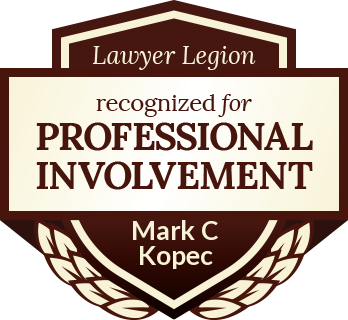Daubert Exclusion: Asokere v. Waldrop
On April 17, 2024, the Appellate Court of Maryland issued an unreported opinion in the birth injury medical malpractice case of Asokere v. Waldrop. The Appellate Court affirmed the Circuit Court for Montgomery County. The plaintiff’s medical experts were subject to Daubert exclusion under Rule 5-702 after the circuit court found that they had changed their testimony between depositions and a Daubert exclusion hearing. Then the circuit court entered summary judgment in favor of the defendants. (Op. at 1).
Facts
During the delivery of the minor plaintiff, the defendant doctor encountered a shoulder dystocia. That occurs when the baby’s shoulder becomes impacted upon the mother’s pelvis. The doctor then wrote in the medical records that she used accepted methods to resolve the shoulder dystocia within one minute after identifying it. (Id. at 2).
Plaintiffs put on testimony that the doctor specifically pulled on the baby’s head with enough force (or traction) to pull the mother down the delivery bed. The doctor denied using traction, and a nurse present denied seeing any. (Id. at 2). The baby suffered a permanent brachial plexus injury. (Id. at 3). These injuries are sometimes known as Erb’s palsy. The brachial plexus is a group of nerves that run from the cervical spine through the shoulder and down the arm. The injury weakens the strength and function of the arm. (Id. at 3).

Plaintiff’s Experts Subject to Daubert Exclusion
Dr. Adler is a causation and damages expert. In a deposition, he testified he conducted a differential diagnosis. He concluded that the doctor caused the injury after delivering the head. Since there was no abnormality in the baby, the shoulder dystocia itself and maternal labor forces did not cause the injury. (Id. at 4-5). The baby suffered an avulsion, which is a tearing of the nerves. That is a traumatic injury that only occurs in a normal baby when the doctor moves the head. (Id. at 5).
Dr. Luciani also testified that the doctor caused the injury using excessive traction. Other causes, such as tumor formation or infection, were not present. (Id.). Both doctors testified that maternal forces of labor could not cause injury in this case in the absence of any abnormality in the baby. (Id. at 5-6).
Defense Motion for Daubert Exclusion
The defense sought exclusion of the experts under Daubert. It characterized the plaintiff’s theory as res ipsa loquitur, premising a violation of the standard of care on existence of the brachial plexus injury. The defense also contended that the plaintiff’s experts ignored a consensus in the medical community that maternal forces can cause a brachial plexus injury. (Id. at 6-7).
The defense introduced peer-reviewed publications that they contended contradicted the plaintiff’s experts’ opinions (Id. at 7). The defense also noted that two courts had excluded Drs. Adler and Luciani for their views that maternal forces cannot cause brachial plexus injuries (Id. at 8).
Courts’ Opinions
At the first Daubert exclusion hearing, the plaintiffs’ experts backed off their opinions that maternal forces cannot cause permanent brachial plexus injury. They said their opinion was based on the facts of this case and, for the first time, relied on literature they had not disclosed before. Dr. Adler also relied for the first time on the testimony about the doctor pulling on the baby’s head. (Id. at 11-12).
The circuit court found that the experts’ testimony was similar to the cases in which the courts had excluded them and that they had bolstered their opinions for the Daubert hearing. The court concluded that the hearing testimony was sufficient and denied the defense’s motion (Id. at 13).
The defense then moved for reconsideration, asserting that the court should not allow the experts to change their testimony. (Id. at 14). The court concluded that the experts had changed the basis for their testimony and exclusion under Daubert was proper. (Id. at 16-17).
The Appellate Court concluded that the changed testimony could indicate an unreliable methodology. As a result, the circuit court did not abuse its discretion in Daubert exclusion of the testimony. (Id. at 17).
Commentary By the Baltimore Medical Malpractice Lawyer
The Appellate Court opinion mentions medical literature and specified one on the maternal forces argument. That was a report that the American College of Obstetricians and Gynecologists (ACOG) prepared. That report (2014 Monograph) discussed peer-reviewed research concerning neonatal brachial plexus injuries. (Id. at 7).
The Appellate Court’s opinion may lead you to think that Drs. Adler and Luciani are hold outs against a medical community consensus on maternal forces. However, the Appellate Court does not provide essential facts that place this controversy in the proper light. The Courts’ quotes from the monograph were not from the peer-reviewed literature but statements of ACOG’s characterizing the literature. To evaluate these statements, we must look closer at ACOG.
Who is ACOG?
On the topic of medical malpractice, ACOG is not an impartial commentator. Instead, ACOG admits that it has a bias against medical malpractice victims, their claims, and the entire US constitutionally based justice system. ACOG actively lobbies to eliminate these rights. Take it from ACOG’s own words:
- “ACOG advocates for medical liability reform on the state and federal levels,” including “caps on noneconomic damages.”
- ACOG also lobbies for “administrative compensation systems,” eliminating the constitutional right to a jury trial.
- ACOG advocates for “Safe harbors.” These would eliminate medical malpractice liability for physicians who adhere to medical practice guidelines. Of course, ACOG wants to pronounce the guidelines.
ACOG spends millions of dollars in lobbying for its goals.
The Maryland courts gave much more respect to ACOG than ACOG gives to them. Here is ACOG’s opinion of the court system:
- “The US tort system is costly, time-consuming, inefficient, and unjust.” “It cannot accurately distinguish bad outcomes from genuine negligence.”
- “The costs of this system are borne by all obstetric caregivers and the hospitals where they work through the escalation of medical liability premiums.” The median ob/gyn salary in 2021 was $354.885, after the alleged cost bearing. The 90th percentile made $540,632.
What Actual Literature Did the Courts Rely Upon for Daubert Exclusion?
It appears that all of the Appellate Court’s quoting from the 2014 Monograph is comprised of ACOG’s characterization of the literature, instead of quotes from the underlying articles. (Op. at 7-8). With ACOG’s bias against medical malpractice claims, how can its self-serving statements be taken as medical community consensus?
Within the quotes the Appellate Court chose, there is a specific reference to only one article. That may be the 2008 article by Lerner & Solomon. In that article, the author reports a birth before the ob/gyn could assist in the delivery. The authors claimed there was no shoulder dystocia. The baby suffered a permanent brachial plexus injury. The article is two pages in length and concerns only one birth.
However, there has been suggestion that the birth may have involved a shoulder dystocia, which would invalidate the general conclusion. That court also found that the article provides “tepid support” for the maternal forces theory and referenced “the cloud that remains over it even after peer review.” Nobra v. Shanahan, 976 N.Y.S. 2d 841, 852, 855 (Sup. Ct. Orange Cty. N.Y. 2013). (In any event, if “normal” maternal forces without any other factor cause permanent brachial plexus injuries, why aren’t there millions of people walking around with impaired arms?).
Self-serving ACOG statements and a report of one birth hardly establish a medical community consensus on maternal forces that allows for no disagreement. In addition, the Appellate Court did not discuss the literature that plaintiff’s experts submitted. Moreover, as demonstrated below, multiple courts have allowed testimony same as plaintiff’s experts despite the ACOG Monograph.
Drs. Adler and Luciani testified relying on their decades of experience, which included familiarity with the relevant literature. Their opinions are well-supported and have been admitted in courts numerous times.
Other Courts Have Excluded the Maternal Forces Defense
Ironically, it is often the plaintiffs who seek to exclude the maternal forces defense under Daubert exclusion or the Frye standard. The courts have split on this issue. However, it is notable that courts have excluded the defense years after the Lerner and Solomon article was published.
Nobre v. Shanahan, 976 N.Y.S. 2d 841, 847, (Sup. Ct. Orange Cty. N.Y. 2013): Case involved axonotmesis., a significantly milder injury than the avulsion here in Asokere. Still, the court upheld exclusion of the maternal forces testimony. The testimony “had not reached a sufficient point of reliability.”
Muhammed v. Fitzpatrick, CA-11-01764 (S.C.N.Y. App. Div. Fourth Jud. Dept. January 31, 2012): Affirming trial court’s exclusion of maternal forces defense. Plaintiffs showed the defense was not generally accepted within the medical community.
Courts Have Allowed Anti-Forces of Labor Testimony
Even in cases where the courts declined to exclude the defense, they repeatedly allowed the plaintiffs experts to testify that maternal forces do not cause permanent injury. These cases are years after the publication of the ACOG Monograph, they discuss the same Monograph quotes that Asokere court did, and nevertheless they allowed the testimony:
Fonville v. Zeid, 327 So.3d 658, 672 (C.A. Miss. 2021): “Defendants presented the ACOG 2014 Monograph in support of their position that maternal forces of labor alone can cause neonatal brachial plexus palsy injuries.” The court then noted that Plaintiff’s expert Edith Gurewitsh-Allen is cited numerous times as a reference in the 2014 Monograph. At trial she testified that she “agreed with the statement in the 2014 ACOG monograph that ‘maternal forces alone are an accepted cause of at least a transient [neonatal brachial plexus palsy ] by most investigators.’ However, she disagreed with both defense experts that maternal forces of labor alone could cause a permanent brachial plexus injury, and, as a result, she disagreed that maternal forces of labor were the cause of injury in this case. She further opined that a permanent neonatal brachial plexus palsy injury could only result from ‘externally-applied force by the physician.'”
Dussault v. Hamilton, No. 76019-0-1 (Ct. App. Wash. 2017): Plaintiffs allowed to present three experts who testified that maternal forces “could not” cause an avulsion injury (like Asokere’s here) and that it is “caused only” by excessive traction by the doctor.
The Plaintiffs’ Experts Daubert Exclusion Was Unfair
The basis for exclusion in this case was that the experts changed their opinions from the depositions to the Daubert exclusion hearing. Facing possible exclusion, the experts had to choose between 1) continuing to advocate the general opinion that maternal forces do not cause permanent injuries in the absence of an abnormality and risk exclusion or 2) focusing on the specific opinion concerning pulling in this case and defeat exclusion.
Unfortunately, this had become a no-win situation. Either way, it would lead to exclusion under the Courts’ analysis.
When the experts chose the second course, the Courts characterized this as a “change” to their testimony. However, the foundation for their opinions continued to be the same as before – that traction caused this permanent injury. Often, unfair surprise and prejudice are involved when courts exclude based on change. There was none shown here. The experienced defense counsel in this case is likely familiar with all of the arguments and literature involved in brachial plexus cases. In addition, there was no showing that anything disclosed at the Daubert exclusion hearing would impair the defense’s ability to prepare for trial.
Moreover, the Appellate Court concluded that the change of testimony could be evidence of an unreliable methodology but did not explain how that is the case here. There is no apparent methodology problem.
Injustice
The minor plaintiff had experienced experts supporting the claim. There also was a documented shoulder dystocia and evidence of pulling on the head. Specifically in these circumstances, traction is the probable cause. The literature and doctor experience specifically support this. A jury could find so, and juries have often found that way in similar circumstances. The plaintiff’s claim was likely for a lifetime of pain, suffering, and economic damages. However, the Courts’ decisions have terminated the claim without justification. The circuit court’s first inclination was correct when it denied Daubert exclusion. When it reversed course, it created an injustice that, hopefully, the Supreme Court of Maryland will rectify.
Mark Kopec is a top-rated medical malpractice lawyer. He has represented many minors in Erb’s palsy cases. You can contact him on 800-604-0704 for a free consultation. The Kopec Law Firm is in Baltimore and pursues cases throughout Maryland and Washington, D.C. Thank you for reading the Baltimore Medical Malpractice Lawyer Blog.





